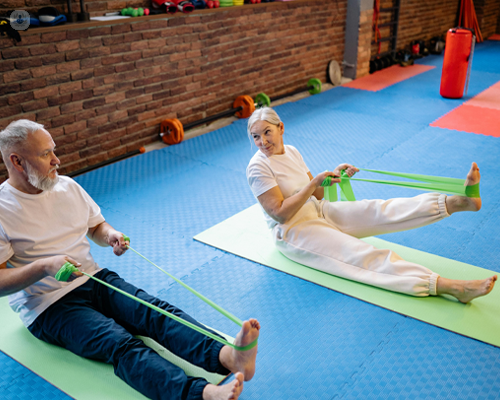Managing osteoporosis and enjoying a comfortable quality of life
Written in association with:Osteoporosis, a condition marked by decreased bone density and increased fracture risk, affects millions worldwide, particularly older adults. Although it is a chronic condition, effective management can help individuals maintain mobility, minimise pain and enhance overall quality of life.

What is osteoporosis?
Osteoporosis is a bone disease characterised by the progressive loss of bone mass and strength, which makes bones more brittle and susceptible to fractures. Common fracture sites include the hips, spine and wrists, often resulting from minor falls or even everyday movements. Osteoporosis is especially common in postmenopausal women due to the drop in oestrogen levels, which plays a key role in bone density.
Symptoms and early warning signs
Osteoporosis, which is often referred to as a ‘silent disease’, progresses without symptoms until a fracture happens. However, some early warning signs may include:
- Gradual loss of height
- Poor posture or a stooped back
- Back pain due to fractured or collapsed vertebrae
Management strategies for osteoporosis
Medications and supplements
- Calcium and vitamin D: These nutrients are essential for bone health. Calcium supports bone structure, while vitamin D enhances calcium absorption.
- Bisphosphonates: Medications like alendronate and risedronate help prevent further bone loss.
- Hormone therapy: This treatment may be recommended for postmenopausal women to help manage oestrogen levels and slow bone loss.
- Other medications: Denosumab, a biannual injection, and teriparatide, a daily injection, are other options for patients at high fracture risk.
Diet
- A diet rich in bone-supporting nutrients can help maintain bone density. Foods high in calcium include dairy products, green leafy vegetables and fortified foods. Vitamin D can be sourced from fatty fish and fortified dairy or obtained through safe sun exposure.
- Protein, magnesium and potassium are also essential for bone health, so incorporating a well-rounded diet supports bone strength.
Exercise
- Weight-bearing and resistance exercises are key for strengthening bones and muscles, improving balance, and reducing fall risk.
- Activities like walking, hiking and strength training are generally safe and beneficial for those with osteoporosis. Consulting with a physiotherapist or specialist is recommended for a personalised and safe exercise plan.
Fall prevention strategies
- Falls are a significant cause of fractures in osteoporosis patients. Home modifications such as adding handrails, securing loose rugs and ensuring proper lighting can help prevent falls.
- Balance training exercises, such as tai chi or yoga, can improve stability and reduce fall risk.
Enhancing quality of life
Living comfortably with osteoporosis often involves lifestyle adjustments and support systems to maintain independence and reduce pain:
- Pain management: Over-the-counter pain relievers, such as paracetamol or non-steroidal anti-inflammatory drugs (NSAIDs), can alleviate mild pain. For severe or chronic pain, a healthcare provider can suggest additional options.
- Supportive therapies: Physical therapy, occupational therapy and even acupuncture may help improve comfort, mobility and quality of life.
- Emotional support: Osteoporosis can impact mental wellbeing, especially after a fracture. Talking with a mental health professional, joining support groups, and staying socially active can be beneficial.
Preventing further bone loss
Regular check-ups are crucial to monitor bone density, review medications and adjust treatment plans as needed. Bone density testing, often done through a DEXA scan, helps track changes in bone health and assess fracture risk over time.
Key takeaways
With early detection and a comprehensive management plan, individuals with osteoporosis can lead active, fulfilling lives. Building a strong support system, maintaining a healthy lifestyle, and being proactive about fall prevention are essential components in managing osteoporosis.
By following these steps, osteoporosis patients can help preserve their bone health, mobility, and independence, leading to a higher quality of life despite the challenges of the condition.


